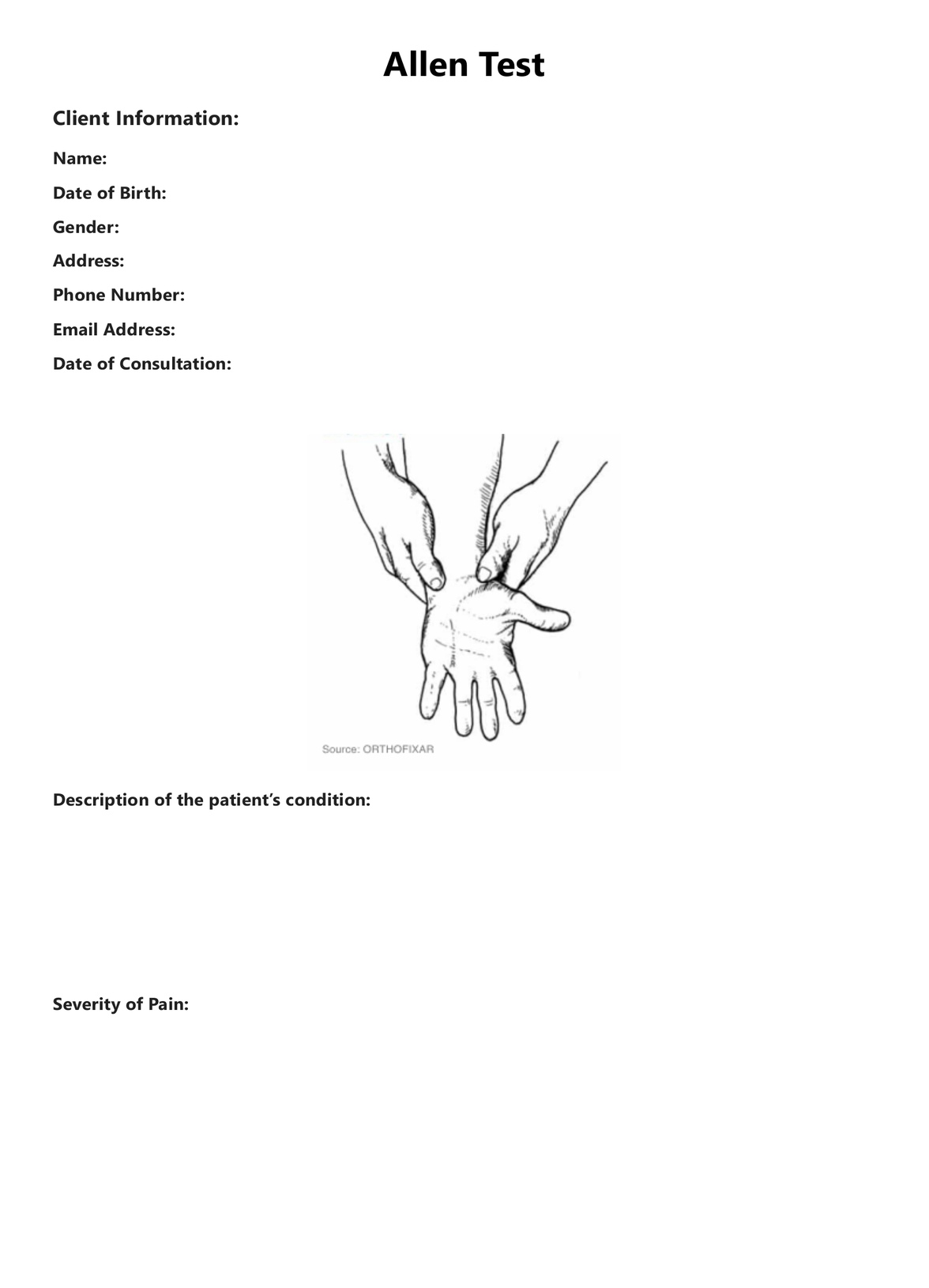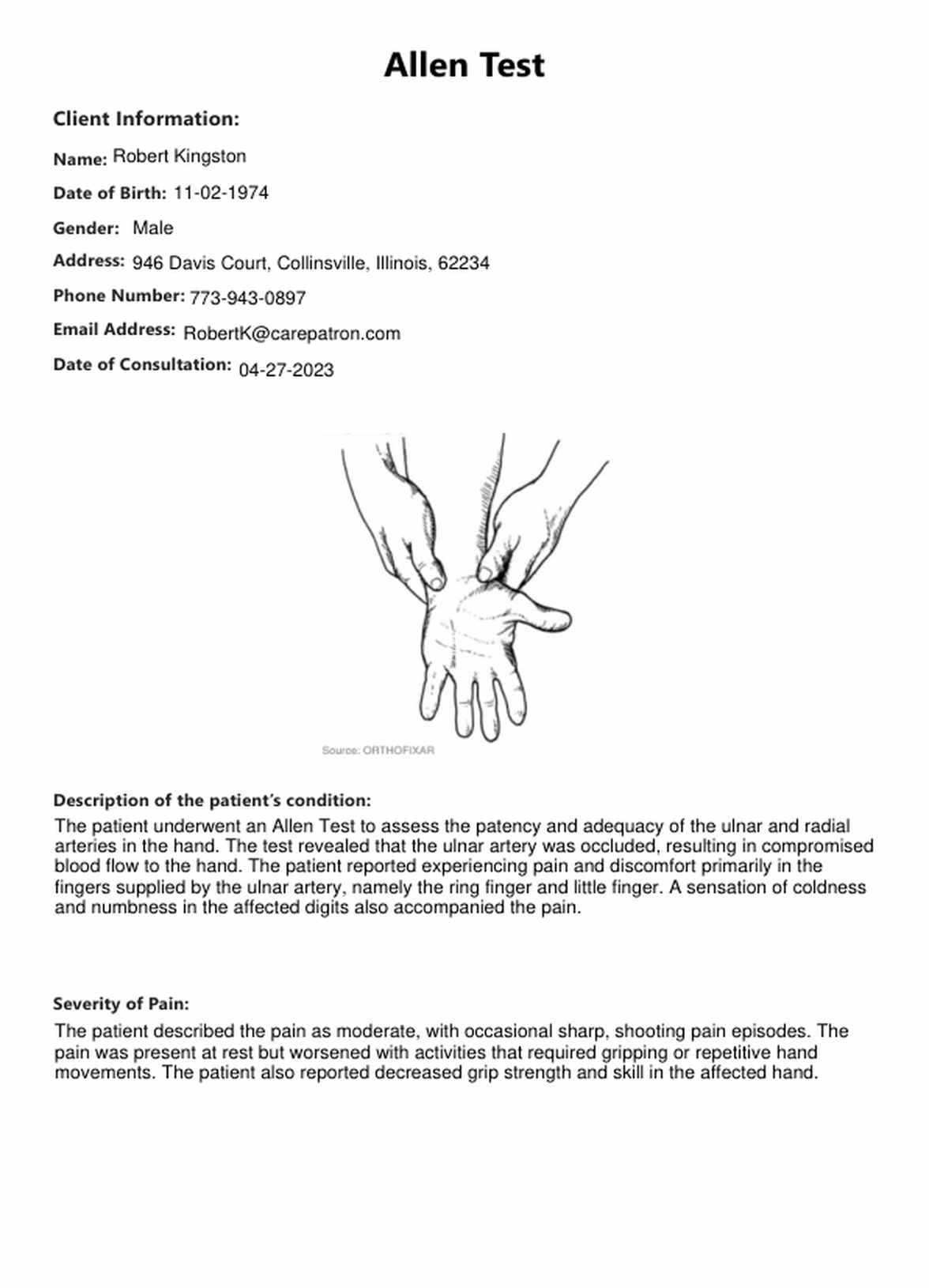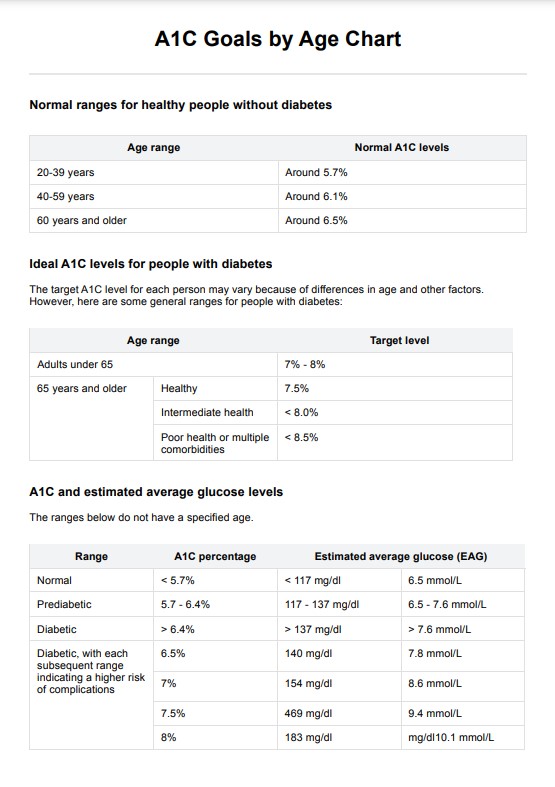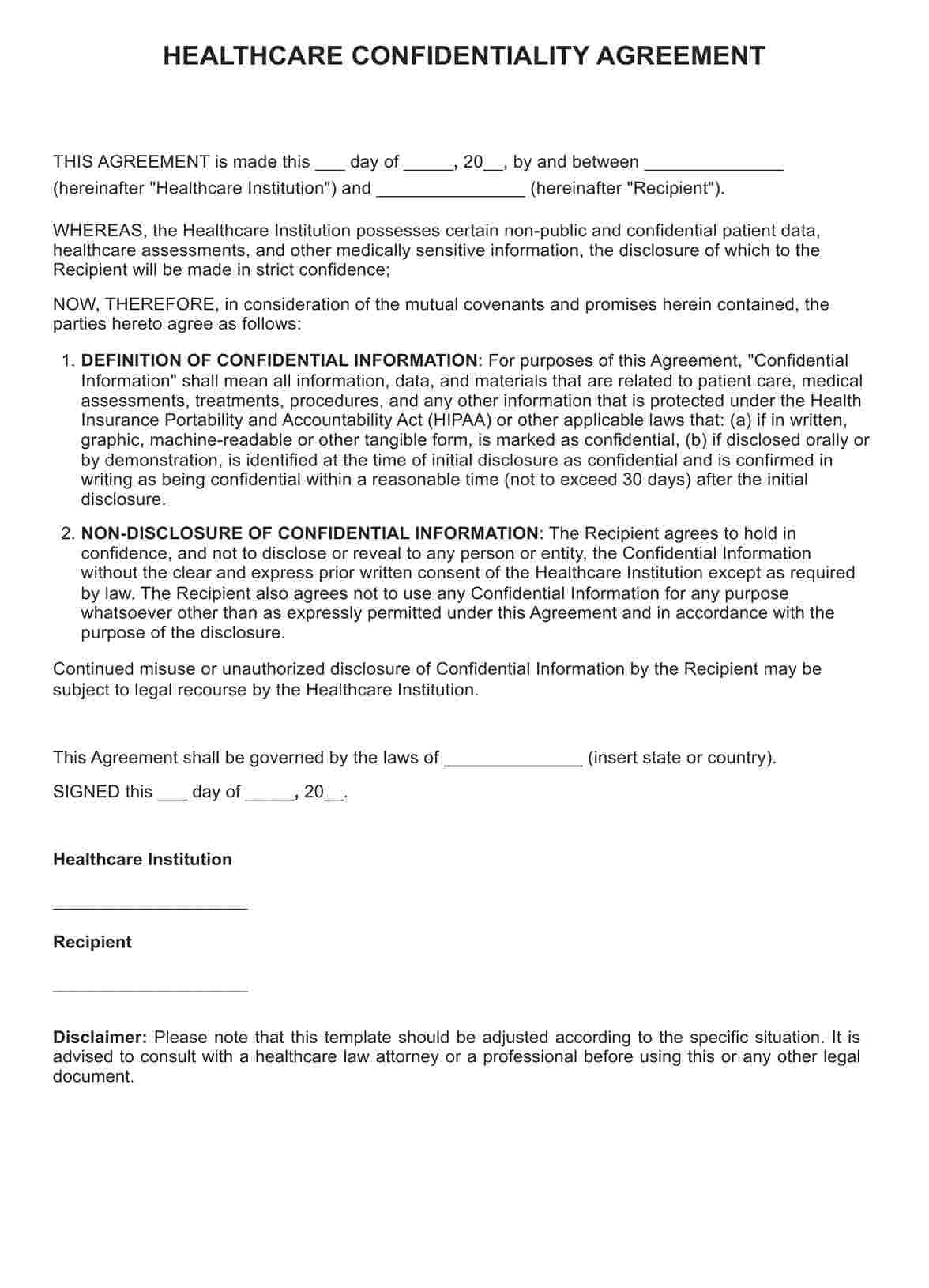Allen's Test
Allen's Test is a physical examination used to assess blood flow through the ulnar and radial arteries in the hand. It helps diagnose arterial occlusion.


What is an Allen Test?
The is a medical procedure to assess the hand's arterial blood flow. It was first introduced by Dr. Edgar Van Nuys Allen in 1929. The test is frequently carried out before specific medical operations, such as arterial line placement, to ensure the patient has sufficient blood flow to their hand.
A healthcare professional, usually a nurse or doctor, performs the Allen Test. The clinician compresses the ulnar and radial arteries in the wrist while instructing the patient to clench their hand tightly. The hand turns pale as a result, showing that blood flow has momentarily stopped.
The healthcare professional then instructs the patient to slowly open their hand while only relieving pressure on the ulnar artery. The ulnar artery sufficiently supplies blood flow to the hand if the hand soon returns to normal color. The test is subsequently repeated, but this time the radial artery is the focus of pressure release. The hand should return to its usual color, demonstrating that the radial artery also supplies sufficient blood flow.
If, after releasing one of the arteries, the hand's color does not return to normal, there may be a blockage in that artery or insufficient blood flow. In certain situations, more testing or treatment may be necessary.
The Allen Test is a brief, non-invasive procedure that gives vital details about the hand's arterial blood flow. It is a helpful tool for medical professionals carrying out treatments that can impact blood flow to the hand.
Allen's Test Template
Allen's Test Example
How does this Allens Test work?
The Allen Test is a medical test that assesses the hand's arterial blood flow. A healthcare professional like a nurse or doctor can do this simple and non-invasive test. Here is how the Allen Test works:
Preparation
The patient is instructed to take a comfortable seat or lie down. The medical professional will then locate the radial and ulnar arteries in the wrist. The patient is advised to relax and keep their hand flat on a surface.
Occlusion
The medical professional put their fingers against the wrist's radial and ulnar arteries. The hand becomes pale as a result, showing that blood flow has momentarily stopped.
Release
The healthcare professional then instructs the patient to slowly open their hand while only relieving pressure on the ulnar artery. The ulnar artery sufficiently supplies blood flow to the hand if the hand swiftly returns to normal color.
Repeat
The test is subsequently repeated, but this time the radial artery is the focus of pressure release. The hand ought to return to its usual color, demonstrating that the radial artery is supplying sufficient blood flow.
Evaluation
Even after releasing one of the arteries, the hand's color does not return to normal, there may be a blockage in that artery or insufficient blood flow. In certain situations, more testing or treatment may be necessary.
The Allen Test briefly stops blood flow to the hand, allowing the medical professional to evaluate how well each of the two arteries in the wrist supplies blood to the hand. The primary blood vessels that supply the hand are the ulnar and radial arteries, and both are crucial for preserving healthy blood flow. The physician can assess if there is any blockage or insufficiency in blood flow from each artery by gradually releasing pressure on each one.
The Allen Test, in essence, is a swift and simple test that provides crucial details regarding the arterial blood flow to the hand. It is a helpful tool for medical professionals carrying out treatments like arterial line placement or vascular surgery that may impact blood flow to the hand.
Scoring
There is no standard scoring system for the Allen Test. Instead, the test gauges how well the blood is getting to the hand. If the hand returns to normal color after each artery is released, the healthcare professional will consider the test to be positive.
Blood flow is deemed acceptable if the hand's color returns shortly after both arteries are freed. After releasing one of the arteries, if the hand's color does not return immediately, there may be a blockage or inadequate blood flow through that artery.
This can assist the medical professional in deciding if more testing or treatment is required. Therefore, there is no scoring system for the Allen Test; instead, its results are determined by how quickly each artery returns to its original color after being released.
When to use these Allen assessments?
The Allen Test is a simple yet efficient medical procedure that can be done to evaluate the hand's arterial blood flow. The Allen Test can be used in the following circumstances:
Before arterial line placement
A catheter is inserted into an artery during an arterial line placement to monitor blood pressure and gas levels. Healthcare professionals generally do the Allen Test before this surgery to ensure the patient has sufficient blood flow to their hand.
Prior to the radial artery harvest for coronary artery bypass surgery
The radial artery is frequently employed as a conduit in coronary artery bypass surgery. Since the radial artery is a significant blood vessel in the hand, the Allen Test is utilized to evaluate the collateral blood flow to the hand before the radial artery is harvested.
Assessment of blood flow in patients with peripheral artery disease
Blood flow to the arms and legs is impeded by a condition known as peripheral artery disease (PAD). Patients with PAD can utilize the Allen Test to assess blood flow in their hands.
Patients with Raynaud’s disease
Coldness, numbness, and discomfort are symptoms of Raynaud's illness, a disorder that causes the blood arteries in the fingers and toes to constrict. Patients with Raynaud's illness can perform the Allen Test to measure the amount of blood flowing into their hands.
After arterial catheter removal
The Allen Test can be performed to determine if blood flow to the hand has been restored after an arterial catheter has been withdrawn.
Who is this Allen Test PDF for?
A number of healthcare providers can perform the Allen test, a quick and non-invasive medical exam, to determine whether the blood flow to the hand is adequate. The following are some medical professionals that can utilize the Allen Test:
Nurses
Before placing an arterial line or undergoing other medical operations, nurses may frequently administer the Allen Test to patients to ensure their hands receive enough blood flow.
Physicians
The Allen Test can be used by doctors to evaluate blood flow to the hand during procedures like arterial line placement or radial artery harvest for coronary artery bypass surgery.
Anesthesiologists
Before inserting an arterial line or carrying out additional operations, anesthesiologists may utilize the Allen Test to check a patient's blood pressure and blood gas levels.
Surgeons
Surgeons can use the Allen Test to evaluate blood flow to the hand both before and after operations, such as hand reconstruction or limb-salvage surgery.
Vascular technologists
The Allen Test can be used to measure blood flow to the hand in patients with peripheral artery disease or Raynaud's disease by vascular technologists who are experts in diagnosing and treating vascular disease.
Overall, the Allen Test is a helpful tool for medical practitioners in various disciplines to ensure the hand has enough blood flow and lower the chance of complications during treatments.
.png)
Benefits of these free Allen Test Templates
The following are some advantages of utilizing free Allen Test templates:
Standardized Format
A uniform framework for documenting test findings is provided by Allen Test templates, making it simpler to compare results over time or between patients.
Time-Saving
Using a pre-made template instead of making an entirely new test sheet for every patient saves time, allowing medical practitioners to concentrate on delivering treatment.
Consistent Documentation
By ensuring uniform documentation, templates help preserve accurate medical records and facilitate information sharing among healthcare professionals.
Accessibility
Healthcare workers may readily obtain and download free Allen Test templates from various sources, making them a useful tool.
Customization
Templates may be modified to meet the unique requirements of various practices or healthcare providers, providing flexibility in record-keeping and documentation.
Accuracy
Using a template helps lower the possibility of mistakes or omissions in paperwork, guaranteeing that all crucial information is correctly gathered.
Improved Patient Care
Ensuring that all pertinent information is captured and readily available, consistent, and accurate documentation may aid healthcare professionals in providing better care to their patients.
Commonly asked questions
Dr. Edgar Van Nuys Allen, an American physician, initially introduced the Allen Test in 1929.
The Allen Test is a straightforward process in which a medical professional occludes the radial and ulnar arteries at the wrist to see how soon the hand returns to normal color once the pressure is removed from each artery.
To score the Allen Test, a healthcare provider will compare the time it takes for the patient's hand to return to its normal color after pressure is released from the ulnar artery versus the radial artery, and assess whether there is adequate blood flow through each artery.
















































































































